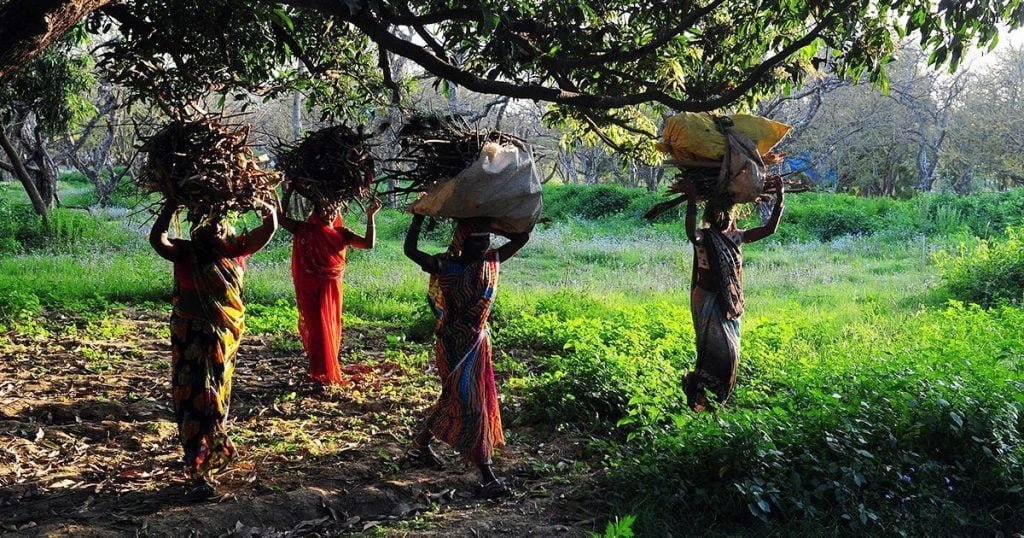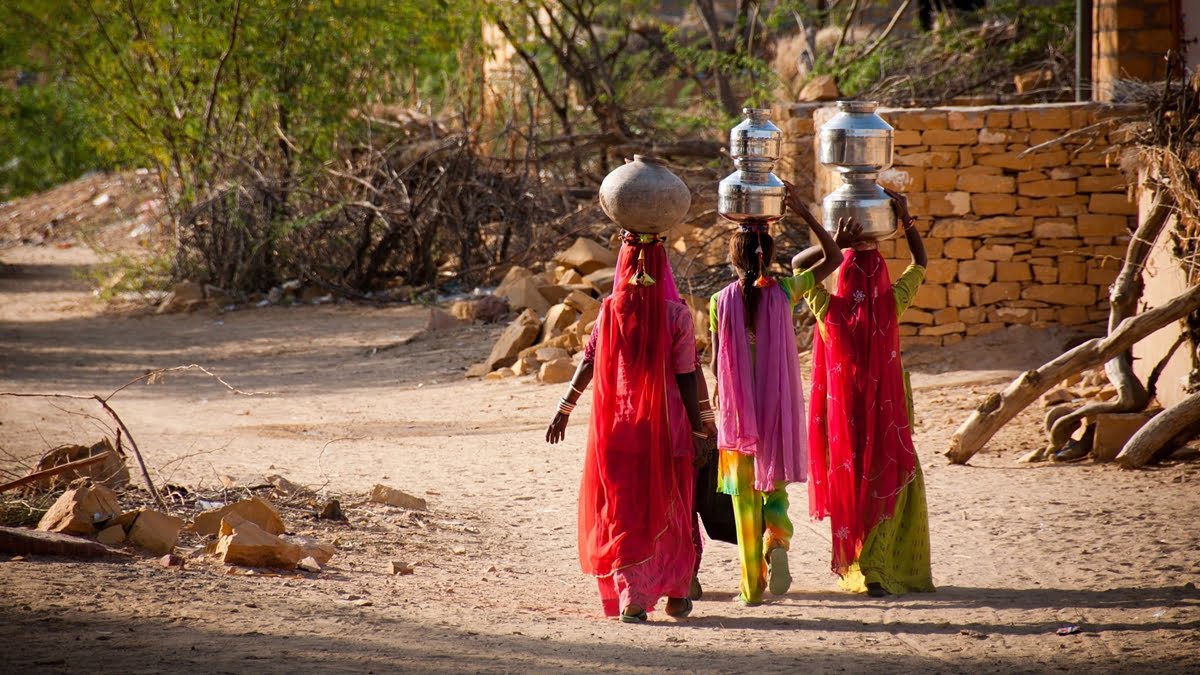Something is obviously missing from the conversation surrounding India’s energy transition. Except on some rare occasions – like the launch of the Pradhan Mantri Ujjwala Yojana in 2016, which also comes largely with empty promises, the conversations around energy transition at the policy level have largely been gender-blind. This is particularly true when it comes to energy in the household; think lighting, cooking and heating fuels. Focusing on closing the gender gap is not enough to put an end to the gendered energy injustice that continues to plague India’s development. Sustainability is key to ensure that structural problems are solved for good and not exacerbated over time. This paper explores the different ways in which gender and energy intersect, the consequences of the gender-blind spot in Indian policy making around energy, and the possible solutions.
This paper explores the different ways in which gender and energy intersect, the consequences of the gender-blind spot in Indian policy making around energy, and the possible solutions.
Energy is a very gendered sector. In India, 92 percent of rural domestic energy needs are fulfilled by women gathering fuel. On the other hand, their male counterparts are required to deal with energy activities considered dangerous. Men are neither asked to carry buckets of water nor clean hours-worth of laundry, but they are expected to learn about the workings of electrical installations and configurations of heating systems; and everything that falls into the conventional masculine domains.
Also read: How To Mitigate The Impact of Climate Change On Agriculture
But why is a gender-perspective in policy making around energy so important? Energy policy affects men and women differently because it determines which project receives more attention and support, and which is left behind. For example, “large-scale expansion of the electrical grid without support for domestic connections may bypass poor women” instead of supporting them. Conversations around energy should be holistic in nature and not simply stem from technical viewpoints. Elaborating on the intricacies of wire cables and gas extractions is not mutually exclusive with understanding how people’s lives are socially impacted by energy decisions. It also doesn’t help that the conversations held in the room is usually between men only. As of 2018, the participation of women in the Central Council of ministers was a meagre 12 percent.
Energy policy makers should incorporate a sociological analysis at the core of their discussions since social and political determinants are the root cause of important power imbalances.
These imbalances are made evident by the contrast between the micro and macro levels of the energy sector. As it stands, energy puts women at risk at the micro level. Mainstream-household chores – particularly seen as the responsibilities of the woman to produce energy to cook and clean – imply that women are the ones most likely to suffer the health-related risks of dangerous energy practices. For instance, Indoor Air Pollution (IAP) – the result of toxic fumes from kerosene lamps and hazardous gases from burnt biomass, is responsible for more than 2 million premature deaths a year, with the most affected group being women. On average, a woman in India dedicates about four to six hours of her day to cooking. The health-related risks increase in rural and poor areas where access to clean cooking fuel like Liquefied Petroleum Gas (LPG) is more restricted and families are left to use lower grade fuels like firewood, coal, crop residues or dung.
What’s more, a disproportionate burden of climate change consequences falls evidently on women. Higher sea levels and droughts lead to decreased access to fresh water, which means women lose hours walking to fetch pots of water. Flooding, infrastructure damage, and scarcity of traditional food sources are also some of the consequences of climate change. Because women are considered the primary caregivers in most families, the stress that comes with the responsibility of ensuring every stomach in the house is fed – falls on them. And so, the ill-effects of IAP and a high vulnerability to climate change lead directly to more damage to women’s physical and mental health.
Not only does energy need a gendered re-reading, but a revolution that is sustainable. India is currently the world’s third largest emitter of greenhouse gas. It is expected that it will soon experience the fastest growth in energy consumption at the global level. India’s heavy reliance on coal will make it difficult to adhere to the objectives fixed by the Paris agreement. The cost of renewable energy – such as wind or solar-powered – has massively come down in the last 10 years. Furthermore, this cost seems small when compared to the price that women will have to pay for the consequences of unsustainable energy-tapping practices and the climate change on their health and safety. As such, switching to renewable energy represents not so much a financial burden as a long-term profitable investment.
While those at the micro level are oppressed by their position, those at the decision-making level are empowered. One example of this is the Panchayati Raj, a system of decentralised, self-managed government. It has been repeatedly shown, in research showcasing corruption in local government institutions, that Panchayati officials – male most of the time – often misuse public funds, including for energy and development projects. Incidences of officials taking advantage of their positions include getting disproportionately easier access to local energy sources. This is yet another illustration of women being excluded from the decision-making process around energy. Consequently, energy inequality continues to exist.
This deeply entrenched inequality indicates that we cannot develop new policies and innovative projects that will benefit Indian society as a whole. However, ensuring more affordable and cleaner energy is not merely a way to enhance the quality of livelihoods by bringing “immediate benefits“, such as lower rates of indoor pollution (IUCN), it also becomes a powerful means to emancipate.
Energy poverty begets time poverty, which in turn leads to a large cost of opportunity for female labour. Women spend on average 40 hours collecting firewood every month, and regularly have 17-19 hours-long days to complete domestic tasks. Reducing the time spent collecting fuels and fetching water would allow women to invest their newly found freedom in education or entrepreneurial opportunities.

Energy poverty begets time poverty, which in turn leads to a large cost of opportunity for female labour. Women spend on average 40 hours collecting firewood every month, and regularly have 17-19 hours-long days to complete domestic tasks. Reducing the time spent collecting fuels and fetching water would allow women to invest their newly found freedom in education or entrepreneurial opportunities. More social independence and economic opportunities for women facilitates female empowerment and gender equality, which are direct catalysts for India’s development.
So how do we challenge the status quo on a systemic level? Firstly, in a country where more than half of the population lives outside large cities, improving access to clean energy in rural areas should be a priority. Secondly, the decision-making process should be framed by advisory boards that reflect a balanced gender perspective. This can be done in two ways. The first is that gender should be an inevitable topic of concern placed at the heart of energy policy decisions, guiding and structuring the conversation, and not cast aside. The other powerful tool that can reshape the policy dialogue are the people who are having the dialogue. Qualitatively improving female representation on policy-making committees is crucial. Thirdly, qualitative data drawn from the average citizen’s experience with energy should be heavily used to better understand the complexities associated with the populations’ energy demand and needs, and how these evolve over time. It is pertinent to move away from a capitalist interest towards the social welfare and interest of the general population. This would ensure that policies are designed in a bottom-up fashion rather than imposed from the top-down.
Also read: Need, Not Greed – What Modi Isn’t Telling Us About Climate Change
The Environmental Impact Assessment draft 2020 for instance, is founded in bias and complete apathy towards the local population, considering how it makes it easier for industrial projects to stay non-transparent about their intentions and evade environmental clearances by eliminating public hearings with the indigenous and tribal population whose livelihoods and lives are the most affected by industrial giants’ projects. It dilutes several policies that would ensure the safeguarding of the environment. A gendered approach to energy and environment would ensure this does not materialise.
Energy policy making is not just about energy. Rather, it addresses the social, cultural, economic and political aspects of the energy sector, and how these interweave. Only when decision-makers are able to build a holistic portrait of energy’s place in society and grasp the complexities of energy use, will they be able to address the critical issues around it.
Clearly then, energy policy making is not just about energy. Rather, it addresses the social, cultural, economic and political aspects of the energy sector, and how these interweave. Only when decision-makers are able to build a holistic portrait of energy’s place in society and grasp the complexities of energy use, will they be able to address the critical issues around it. This paper has identified that two mechanisms happen simultaneously when women are included in the energy discussion: the economic burden of health-related costs for women shrinks, while female economic opportunities increase. Gender perspectives can no longer be used as tokens to tick the boxes of political correctness and instead, must lead important conversations.
References
- OECD
- C. Miller, 2014
- World Bank
Fosca is a Paris-born, London-based, Cambridge-educated graduate student. She is passionate about using anthropological methods to help advance causes such as sustainable development, women’s rights and global access to health. After graduating from Trinity College, she went on to live in Egypt where she worked for WHO in cancer surveillance, before setting foot in New Delhi where she interned as a public policy researcher with The Observer Research Foundation. She was recently awarded a merit scholarship to study at the University of Chicago, where she will begin her masters degree in the the Social Sciences during fall 2020. Her research will span over the inter-connected themes of ethics in the biomedical sphere and surveillance in contemporary societies. She can be found at foscamajnoni@gmail.com
Featured Image Source: Times Of Israel




